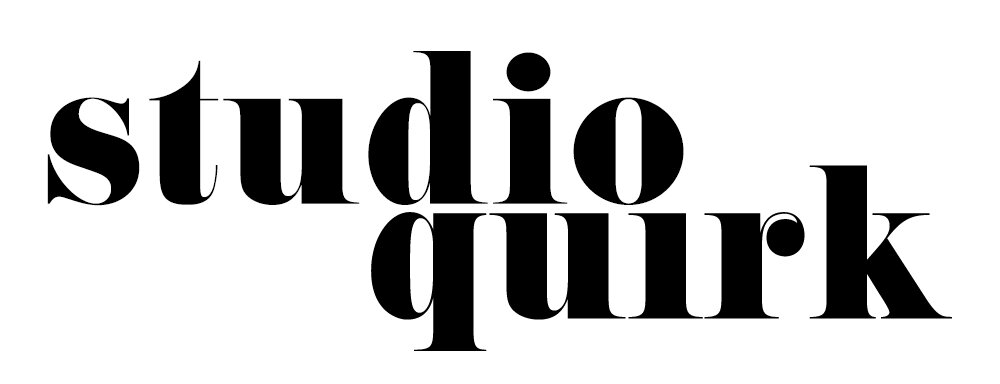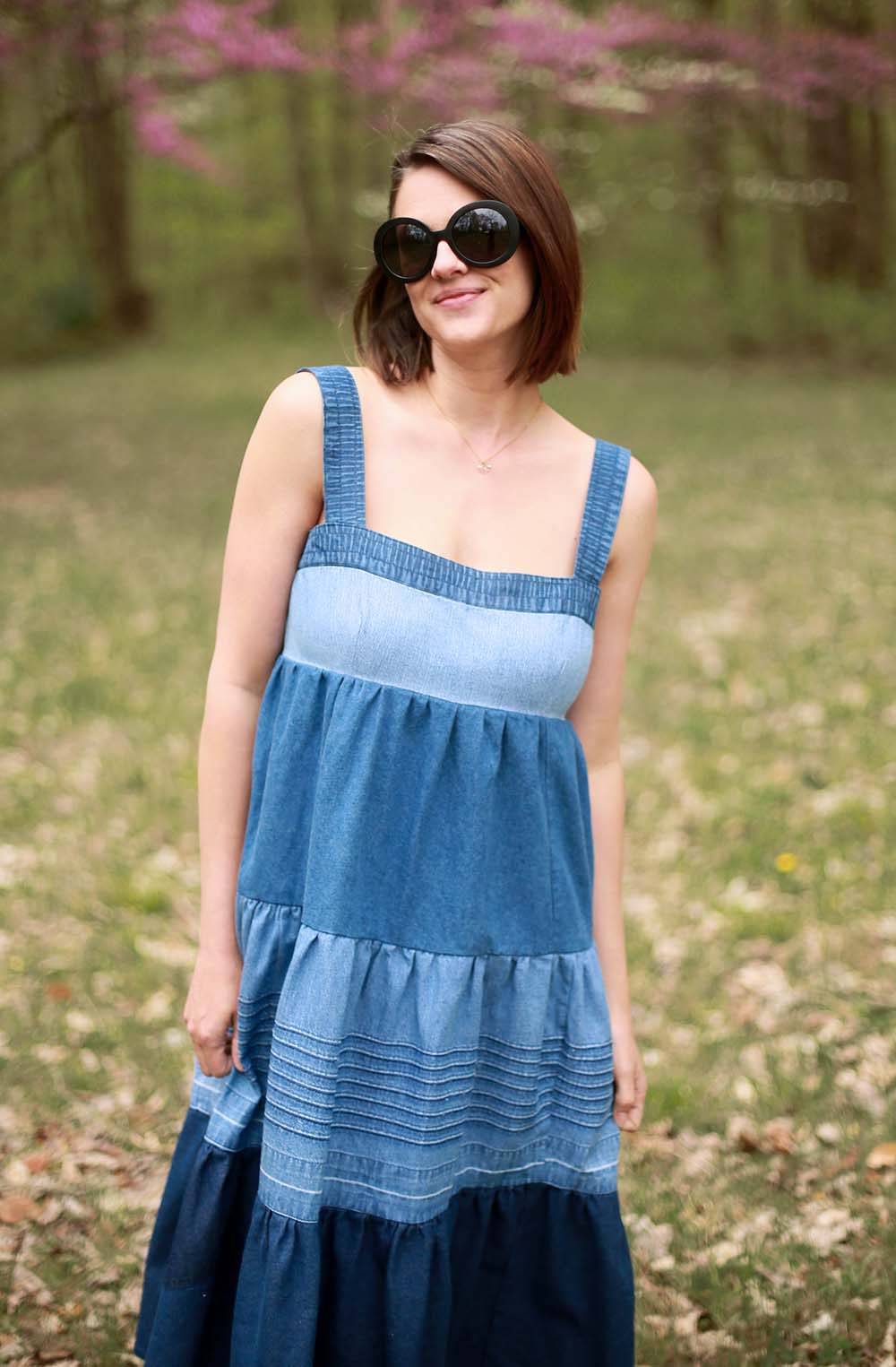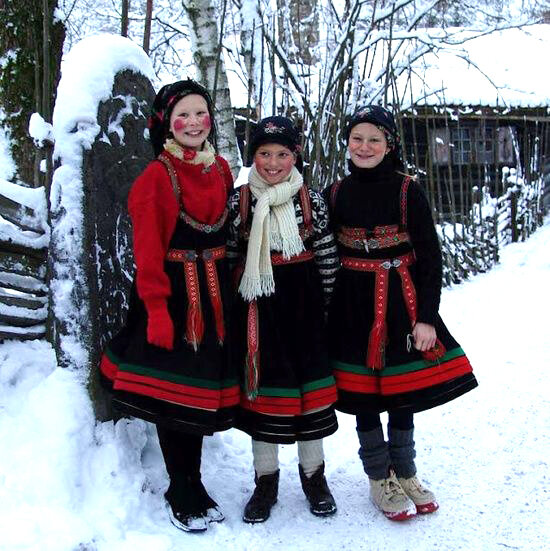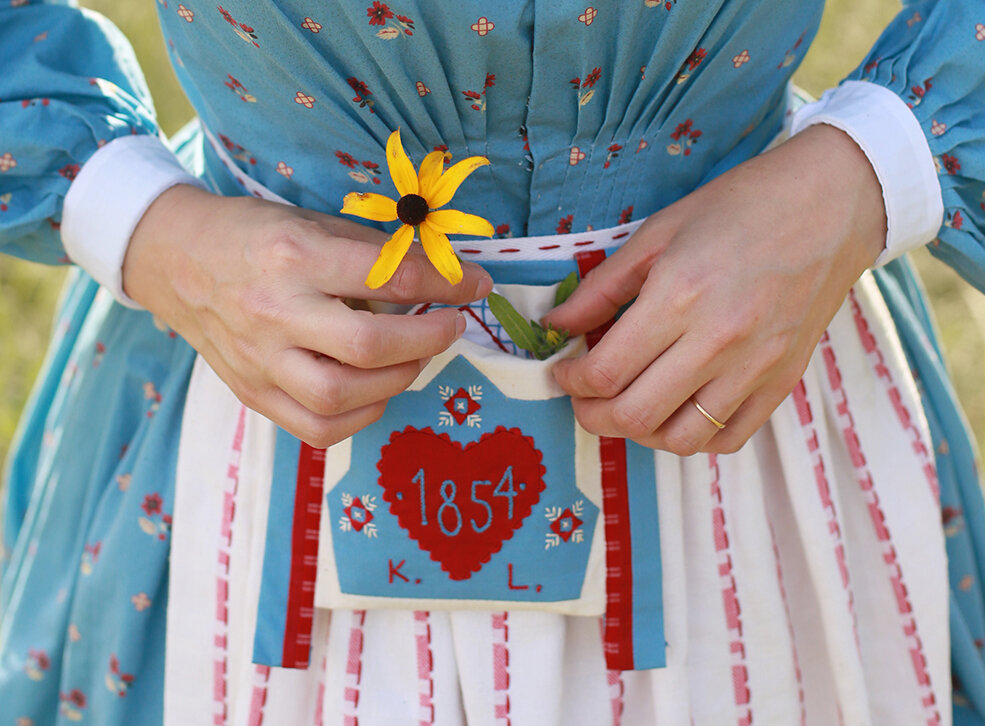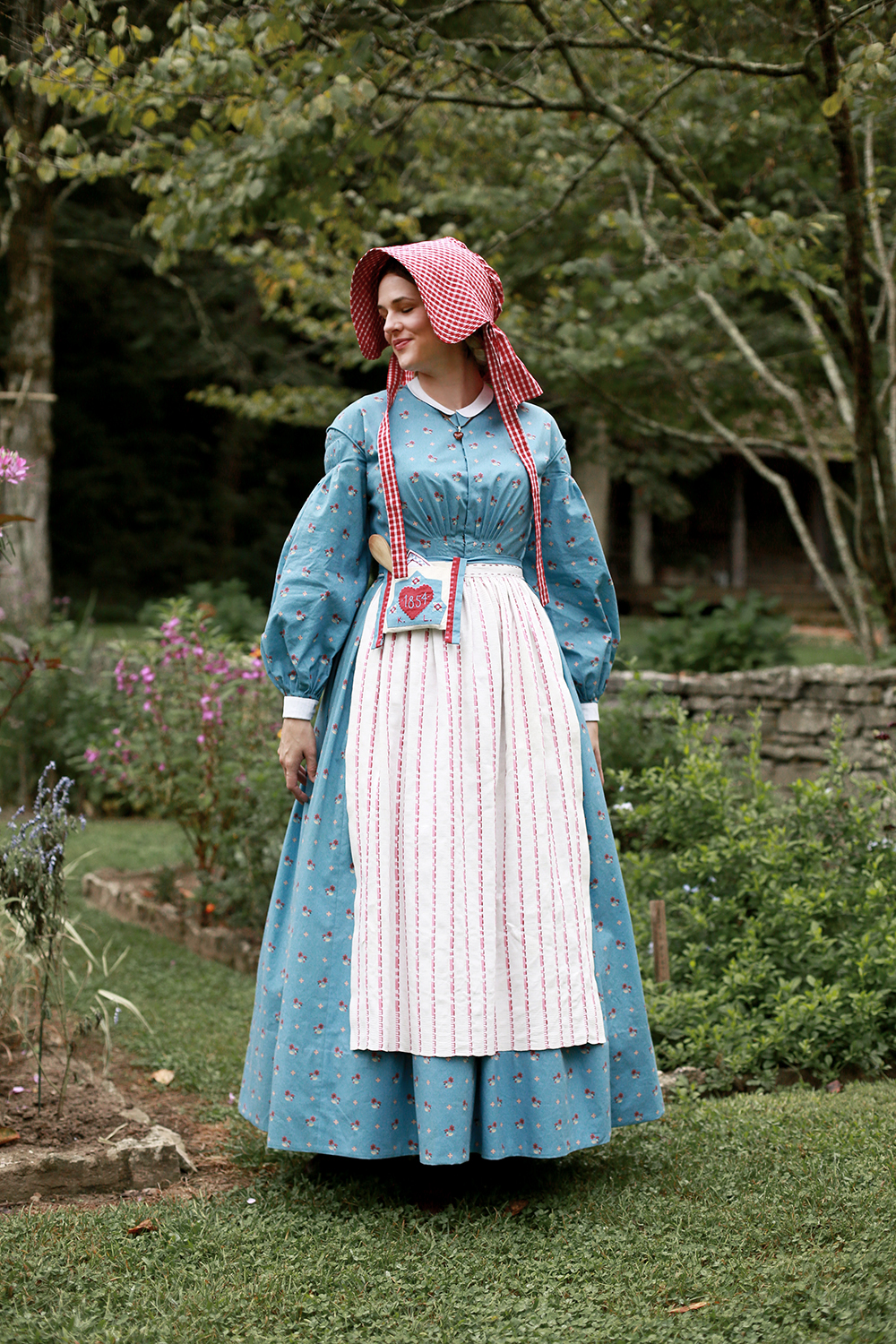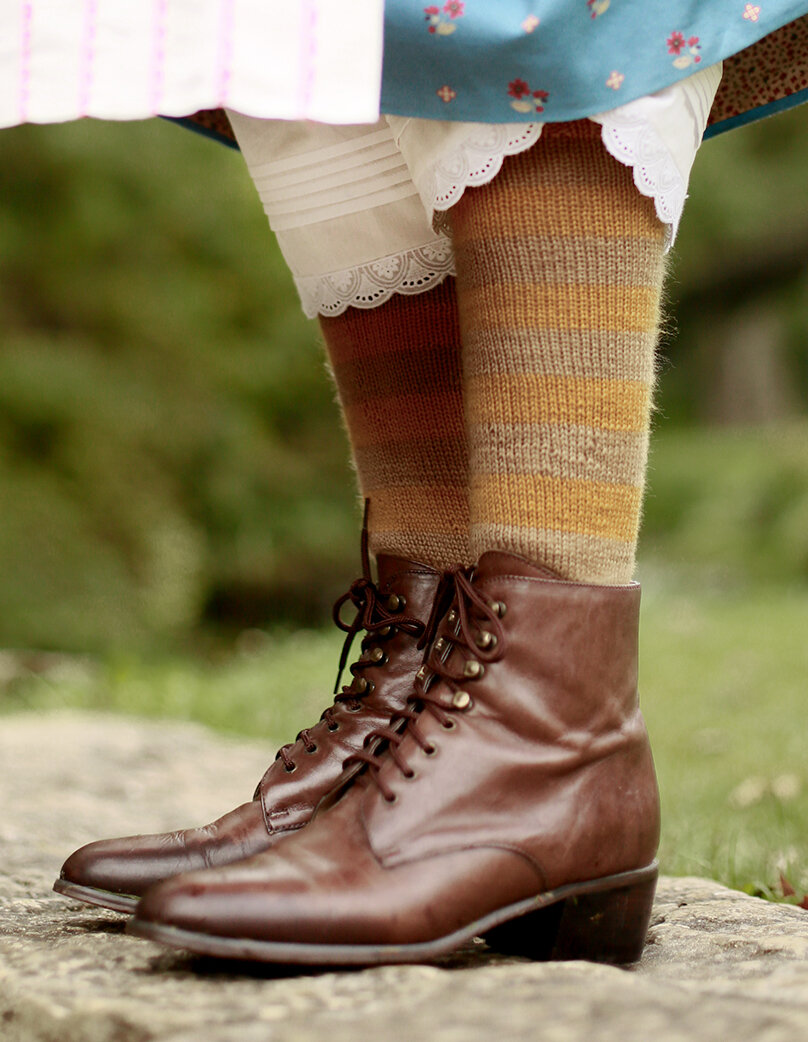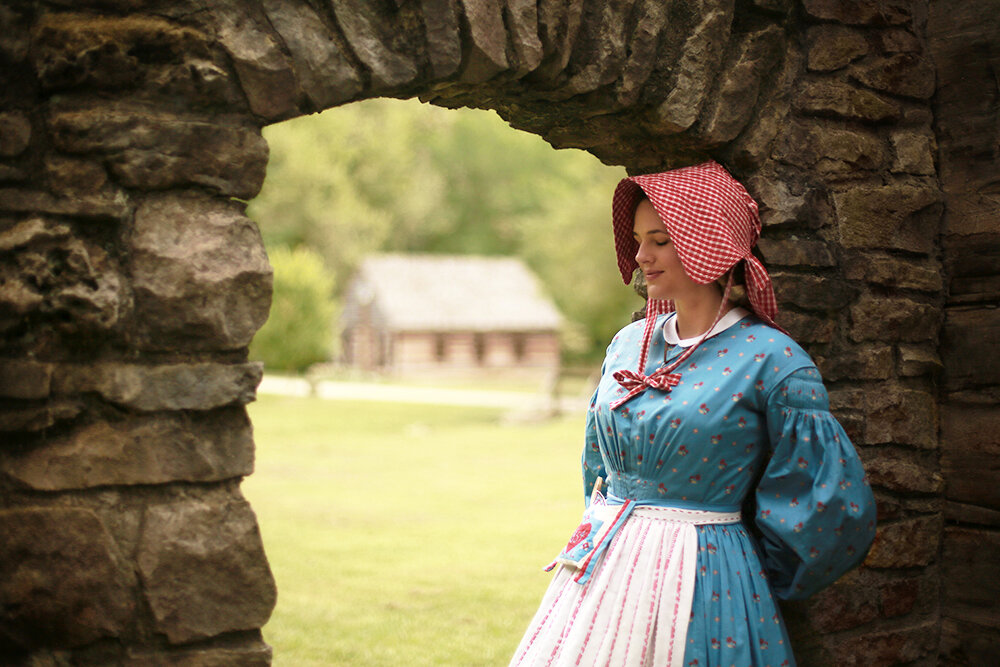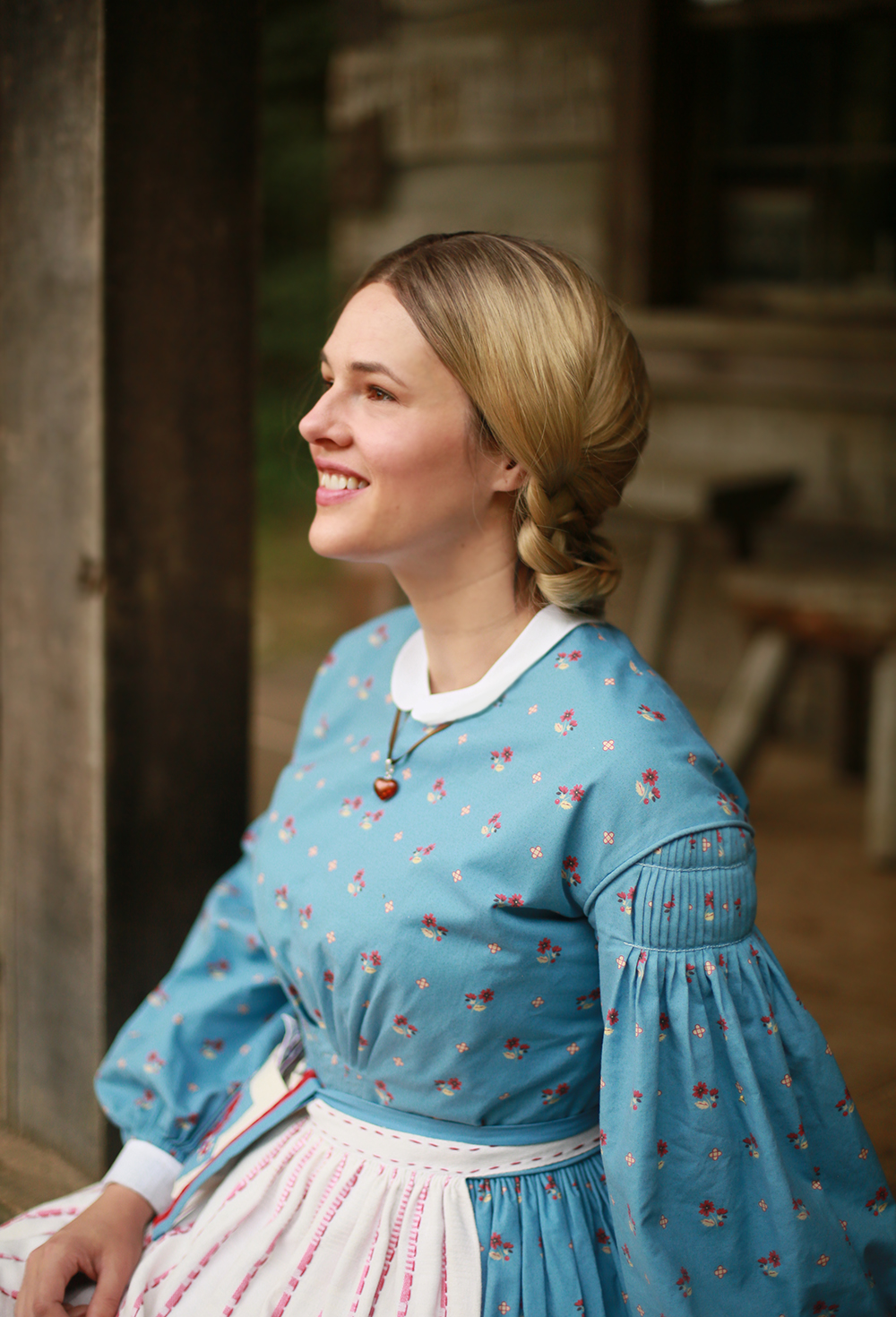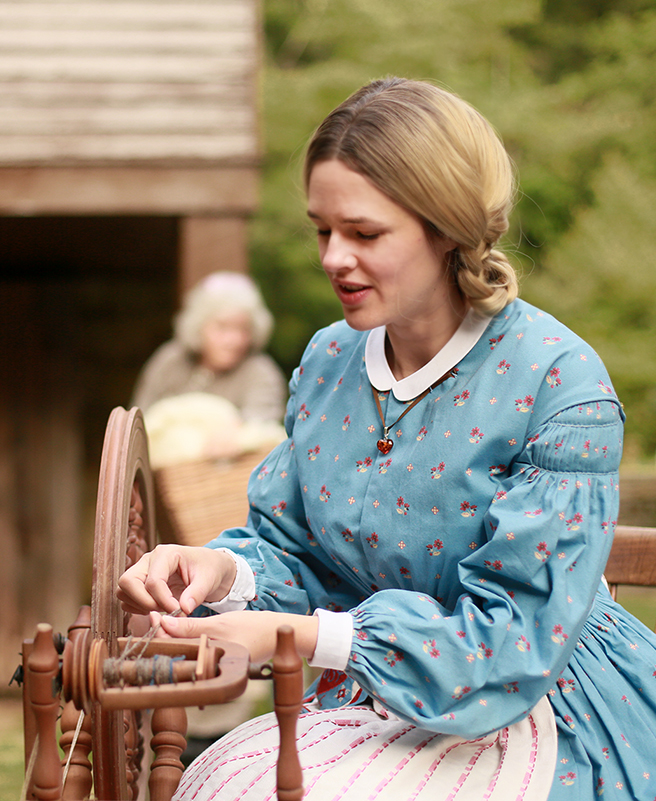Although not visible in these images, I’m wearing historical undergarments including drawers and chemise (both pictured at right), a corset and a quilted petticoat. The first layer is a pair of open drawers that tie at the waist made out of white cotton. The center front and back seams are left open so using the out house is less of an ordeal (Because of the way the corset falls over the waist and hips, lowering and raising a base layer would have meant removing all of the day’s layers for each visit to the privy.) Busy women didn’t have time for that! Drawers were worn primarily for warmth on the legs and sometimes modesty and are roomy in their cut so nothing feels like it’s out in the open! They have decorative tucks at the hem along with scalloped eyelet trim, just like Kirsten’s.
Over the drawers is a chemise, which looks kind of like a nightgown. Also made of white cotton, It extends to the knee and has some decorative pin tucks at the hem. All women, regardless of social class, would have worn base layers to protect more valuable corsets and outer layers from the sweat and oils of their skin. Like modern undies, most women would have multiple sets to rotate while they may have worn the same dress day in and out. White cotton (or linen) was also able to take a literal beating in the boiling wash water without worry of fading color or making a print dull.
Next is a corset, cut out of lightweight but strong coutil or French Twill. I used the Laughing Moon 100 pattern for all of these pieces and they came together quickly and easily! I always start with my base layers of my costumes first as they can change your measurements by pulling in your waist, lifting your bust and generally smoothing everything out. There’s a huge misconception that wearing a corset is a painful ordeal - it’s not! For me it feels much more comfortable than a bra and gives the support of a back brace. All that said, I don’t do extreme tight lacing - just enough so that my laces are even in back, which only takes in an inch or two.
The last foundation garment is a quilted petticoat which is actually from my 18th century kit. Some things can transverse centuries, others cannot (like stays or corsets!) This petticoat does the job (there are even written mentions of quilted petticoats in the Kirsten series) but if I were to revisit the early Victorian era I’d do a corded petticoat. Caged crinolines and hoop skirts that many associate with the middle of the 19th century begin to appear at the tail end of the 1850s, but primarily in the upper echelons of society before extending to other classes.
If you’d like to see any of these underpinnings in action, you can view them here.
